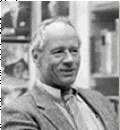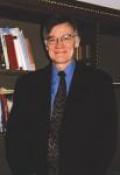Martin Van Buren
Martin Van Buren had his eye on the presidency for most of his political career, and he managed to pave the way to the White House door first for Andrew Jackson and then for himself. His son John was evidently less ambitious.
When did we start saying it? And why?
FROM THE OIL FIELDS of Indonesia to the tulip fields of Holland to the rice fields of Brazil, a traveler overhears conversations sounding something like this:
One man measures his life-span against the length of recorded history and finds tidings of comfort and hope
At the risk of being sneered at as a NeoVictorian, I hereby admit to a nineteenth-century belief that, allowing for daily relapses Land hourly alarms, the world of man is improving.
Declaring himself a “thorough democrat” George Caleb Bingham portrayed the American voter with an artist’s eye—and a seasoned politicians savvy
Between 1847 and 1855 George Caleb Bingham completed a half dozen or so canvases that are among the most unusual and interesting documents in the history of American painting.
Historians are still puzzling over the discovery of an official White House portrait of President Roger Darcy Amboy, who appears to have held our nation’s highest office somewhere between Van Buren and Buchanan.
Our forebears were much given to singing. They sang themselves through revolution with “The Liberty Song” and “Yankee Doodle,” and afterward each struggle of the young nation inspired songsters to extol in music and lyric the virtues of freedom.
The American system of choosing a President has not worked out badly, far as it may be from the Founding Fathers’ vision of a natural aristocracy
Martin Van Buren, Andrew Jackson’s right-hand man, was a master of political intrigue who let nothing block his one unwavering ambition—the Presidency. But sometimes he was too smart for his own good





